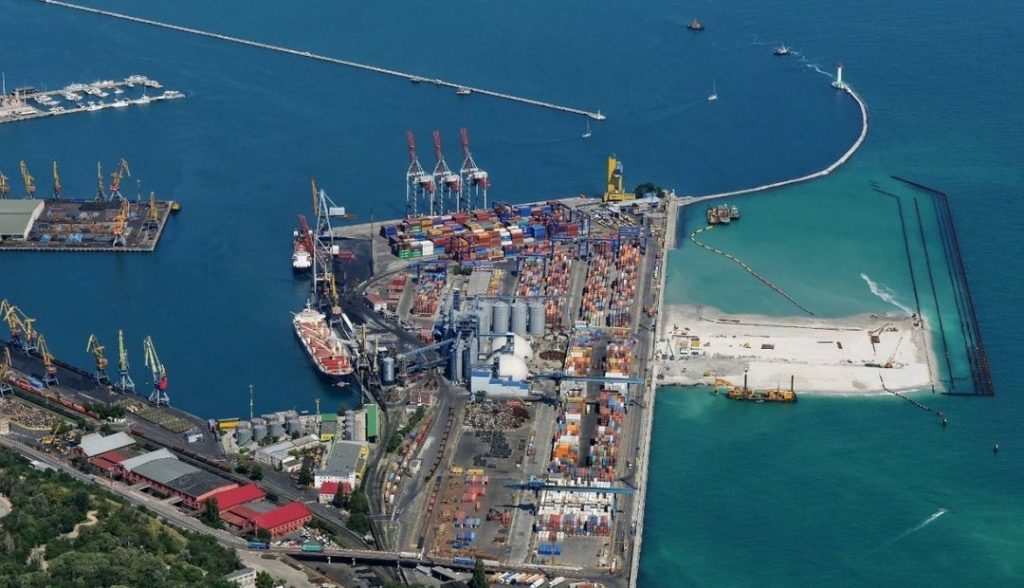Cabinet of Ministers of Ukraine has passed the decision adopting Strategy of Sea Ports Development till 2038 in the new wording. What distinguishes the renewed document from the former one approved in 2013, and why this upgrade was necessary?
Terms and necessity of upgrade
Most of the readers might groundedly question the too long planning prospect i.e. till 2038. This term has not popped out of nowhere since it is the Law on Sea Ports of 2013 that demands the Government to adopt the sea ports development strategy for 25 years. Such a long term usually leads to i) the document’s initial sterilisation without any specifics, or ii) urgent need to frequent re-wording of it. The drafters had opted for the variant which required actualisation but with reasonable periodicity. Having studied the strategic planning experience as concerns the transport sector in developed countries, in particular in South Korea, it was introduced that such documents should be renewed every 5 years with summing up such 5-year periods. Moreover, the 5-year period corresponds to the short-term prospects (5 years), as Law on Sea Ports determines. Therefore, the next upgrade of the port strategy is to take place in 5 years i.e. 2025.
New challenges and trends
The current Strategy has failed to take into account the changes in political and economic fields of the recent years. The occupation and annexation of some territories of Ukraine have resulted in the state closing five Ukrainian ports in the Crimea and Sevastopol, development of which will be possible only after the restoration of Ukraine’s constitutional order in those territories. There came as well the alteration of cargo flow pattern: grains export boosted while coals export changed to energy commodities imported. The ports’ specialisation as envisaged in 2013 has failed too due to the absence of concentred port lands management tools at any governing subject in the sector. The implementation of concession pilot projects in Olvia and Kherson ports requires more detailed planning in the PPP and privatisation matters for other assets in future. Strategy also considers the problem of Azov ports’ competitiveness decrease resulted from the Russian Federation having built a transport bridge across the Kerch Strait, and simultaneously the prospect of a deep-sea channel Istanbul to be constructed by Turkey.
Three priorities
The new wording of Strategy identifies the three clear priorities: i) the industry’s management systems optimization; ii) sustainable development of waterfronts along with land approaches; and iii) enhancement of services rendered in the ports. Among the major steps as regards the first two priorities one can note the final redistribution of the assets between public stevedores and USPA, approximation of the sector’s management pattern to the modern Port-Landlord Pattern (including the state’s gradual exit from cargo handling businesses with the jobs kept), development of the complex development plan along with Ukrzaliznytsia (Ukrainian Railways) and Ukravtodor (Ukrainian Motor Roads), involvement of investors into repurposing of unemployed public capacities, creation of deep-sea terminals and renovation of the special fleet. To improve the service it is planned to implement the concept of an authorized economic operator, to favour free competition at the market of cargo transhipment, provision of towage, bunkering, mooring, passengers servicing, ships’ wastes and cargo remnants reception, as well as dredging works, and to use through rates for the transit.
Directions of development as concerns each port
The main wish by business, as having been voiced in the beginning of the strategy actualisation process, is availability of actual development projects as concerns each port, as the Strategy comes as an underlying cause for the designing of development plans for each port. As an Annex to the upgraded Strategy the designer i.e. Ministry of Infrastructure of Ukraine (MIU) has brought in priority measures for the short (5 years), middle (10 years), and long (up to 2038) term prospects, as a result of consulting with the sea ports’ councils and industry’s associations. Such steps include the USPA and sea terminals’ infrastructure projects, outline the necessary development of outer motor and rail accesses to the ports, and moreover the vision of the public stevedores’ future (PPP, privatisation, re-organisation), as well as the optimisation (consolidation) of port administrations (USPA branches) in smaller ports.
KPI, monitoring with stakeholders participation
A high-quality planning document should include an action plan of its implementation and, of course, the criteria to assess its success. The designer anticipates the sea ports stevedoring companies to tranship up to 171-188M t in the short and middle prospect (in 2019 – 160M t), and up to 209-265M t by 2038. Moreover, the sea ports handling capacities should increase to the optimum 70-75%. From the international benchmarks point of view, the sea port services quality index (World Economic Forum global competitiveness index) should grow from the present 3.9 rate to 5+ which would enable Ukraine to enter the top 30 of the countries regarding port services. The Strategy realisation and assessment monitoring is planned to be provided by MIU, USPA, involving some businesses and municipalities (as per consent) in the course of Ukrainian sea ports councils’ activities.
As a bottomline, it is worth to point out that this Strategy is the document not only for USPA, MIU, or the sector’s public companies. The port community stakeholders of any kind of ownership, logistic and forwarding companies, road and inland water carriers are capable to contribute in the development of Ukraine’s maritime and transit potential, and to jointly raise the national transport market quality level, integrating it in the international delivery chains.
Volodymyr Shemaiev
https:/ports.ua/ports2038-5-aspektov-novoj-strategii-razvitiya-portov/


